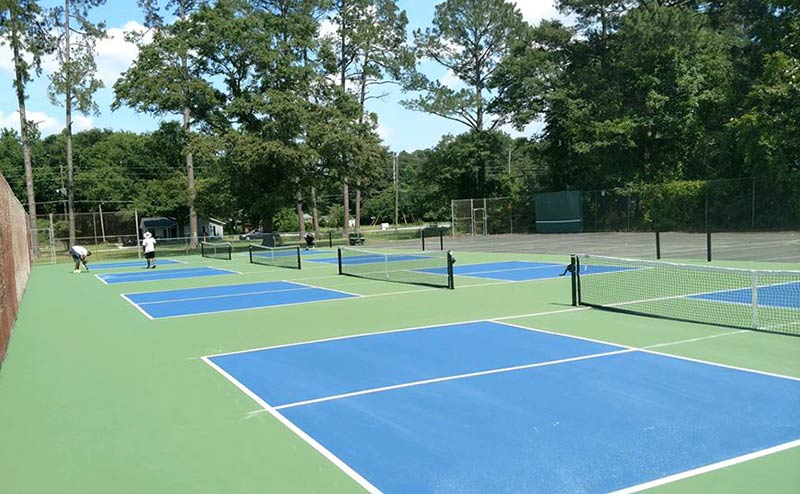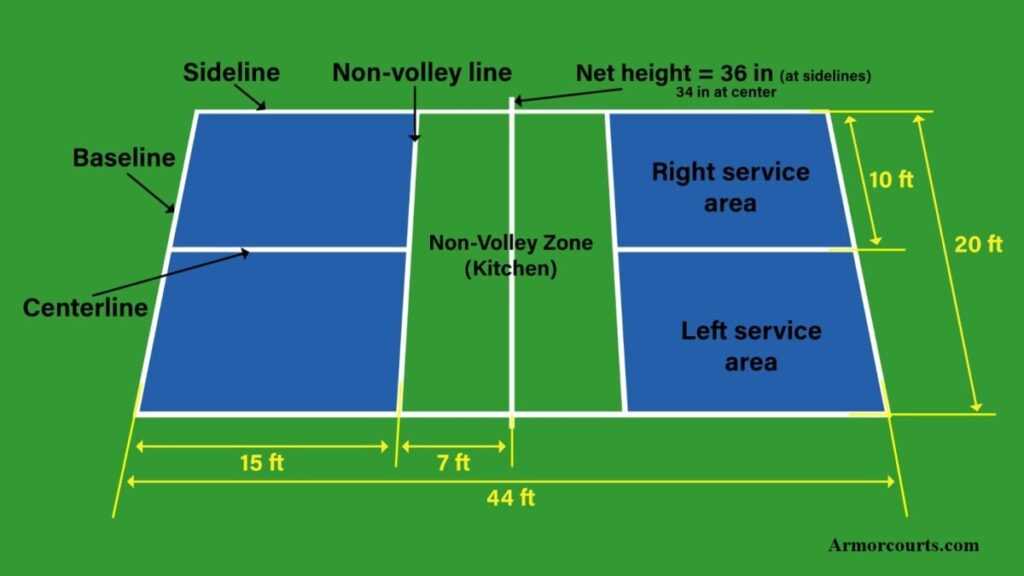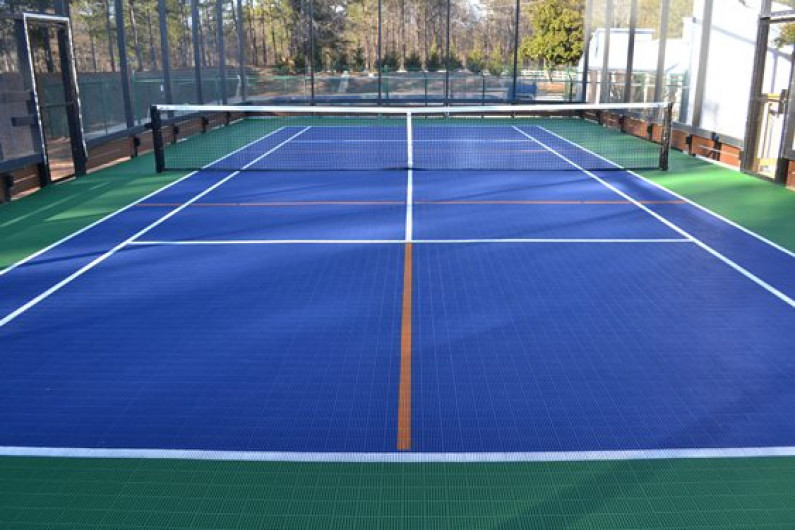High-Quality Pickleball Court Construction for every single Degree of Play
High-Quality Pickleball Court Construction for every single Degree of Play
Blog Article
Lasting Practices in Pickleball Court Construction You Must Know
As the appeal of pickleball remains to climb, so also does the demand for lasting methods in court building. This method not just addresses environmental worries yet likewise boosts the longevity and capability of the courts. From selecting green products to applying efficient water drainage and energy-saving lighting remedies, there are many strategies to take into consideration. Yet, the impact of these practices extends much beyond the court itself. Comprehending how each aspect adds to an extra lasting future invites further exploration right into the intricate equilibrium in between leisure growth and environmental stewardship.
Selecting Eco-Friendly Products
Picking eco-friendly materials is a critical action in the building of lasting pickleball courts. The selection of sustainable materials not just minimizes ecological impact but additionally improves the longevity and performance of the court. Key products include recycled rubber for the surface area, which uses excellent sturdiness and shock absorption while diverting waste from garbage dumps.
Additionally, making use of in your area sourced products lowers transport emissions and supports local economic situations. Pickleball court construction. As an example, using indigenous woods for fencing and seats can give a sustainable visual while guaranteeing durability against the aspects.
Integrating permeable products for court structures can better add to sustainability by enabling natural water drain and decreasing runoff. These choices not only protect local environments but also advertise healthier play atmospheres.
Reliable Drainage Solutions
While the selection of environmentally friendly materials is essential, carrying out efficient water drainage services is just as important for keeping sustainable pickleball courts. Appropriate water drainage not just shields the court surface from water damages but likewise decreases disintegration and overflow, promoting ecological stability.
Reliable drainage systems can include absorptive paving, which allows water to infiltrate the ground instead of pooling on the surface. This reduces the likelihood of standing water, which can result in mold and mildew and other upkeep concerns. In addition, incorporating tactically positioned drainage networks and swales can route excess water far from the court area, ensuring a completely dry having fun surface area and protecting against dirt erosion.
Using native vegetation in the landscape design around the courts can additionally improve drainage by absorbing excess water and lowering drainage. These plants call for less irrigation and advertise biodiversity, lining up with sustainable methods.
Moreover, it is crucial to on a regular basis preserve the drainage system to ensure its long-lasting effectiveness. This includes clearing debris and monitoring for obstructions. By focusing on efficient drain options, pickleball court producers can substantially contribute to the sustainability and longevity of the center, inevitably profiting both players and the atmosphere.
Energy-Efficient Lighting Options
As the demand for pickleball remains to grow, integrating energy-efficient lights choices right into court style has come to be significantly essential for sustainability. Typical illumination systems usually consume too much energy, adding to higher operational expenses and ecological impact. Taking on modern, energy-efficient innovations is crucial for both new building helpful site and constructions and renovations.
LED (Light Emitting Diode) lighting attracts attention as a leading option as a result of its durability and energy cost savings (Pickleball court construction). Compared to conventional illumination, LEDs make use of about 75% less power and can last up to 25 times much longer, dramatically reducing upkeep costs. The directional nature of LED lights reduces light pollution, making certain that lighting is concentrated on the court rather than surrounding areas.

Sustainable Surface Area Alternatives
Discovering sustainable surface choices for pickleball courts has obtained traction among builders and gamers alike. The focus on environmentally friendly materials not only aligns with the growing environmental awareness yet also boosts the efficiency and durability of the courts.
One popular option is the use of recycled rubber, which can be sourced from used tires. This material offers exceptional shock absorption, reducing the threat of injuries for players while advertising sustainability. Additionally, modular ceramic tiles made from recycled plastics supply an additional practical alternative. These ceramic tiles are simple to set up and change, and their adaptability permits different court arrangements.
Natural yard courts are likewise arising as a lasting choice, promoting biodiversity and minimizing the warmth island effect. They require normal maintenance and water, which may not straighten with all sustainability goals.

Water Conservation Strategies

One more efficient strategy involves the setup of rain harvesting systems. These systems gather and save rainwater for use in preserving court surfaces and landscape design. This method not just saves potable water but his response additionally reduces dependence on municipal sources.
Additionally, utilizing drought-resistant landscape design around the courts is necessary. Indigenous linked here plants need less water and are much better adjusted to local environment conditions, therefore decreasing general water usage. Furthermore, using efficient watering systems, such as drip irrigation, makes sure that water is delivered directly to plant origins, reducing evaporation and waste.
Conclusion
Integrating lasting techniques in pickleball court building and construction considerably contributes to ecological preservation and resource performance. Using eco-friendly products, carrying out efficient drainage remedies, and taking on energy-efficient illumination choices can greatly decrease eco-friendly impact. In addition, exploring sustainable surface alternatives and using water preservation methods boost the general sustainability of these entertainment centers - Pickleball court construction. By prioritizing these practices, the construction of pickleball courts can straighten with broader ecological objectives while promoting long life and functionality within areas.
As the appeal of pickleball proceeds to increase, so too does the demand for sustainable techniques in court construction.Picking environmentally friendly products is a crucial action in the building and construction of lasting pickleball courts. By focusing on energy-efficient lighting options, pickleball court constructors can contribute to a much more lasting future while satisfying the demands of players and stakeholders alike.Incorporating lasting surface area alternatives not only enhances the efficiency of pickleball courts but additionally leads the means for implementing reliable water preservation strategies.Integrating sustainable practices in pickleball court building and construction considerably adds to environmental conservation and source performance.
Report this page